Archived Water Damage Blog Posts
Restoring Tranquility: How SERVPRO of Layton Rescues Homes from Water Damage
1/15/2024 (Permalink)
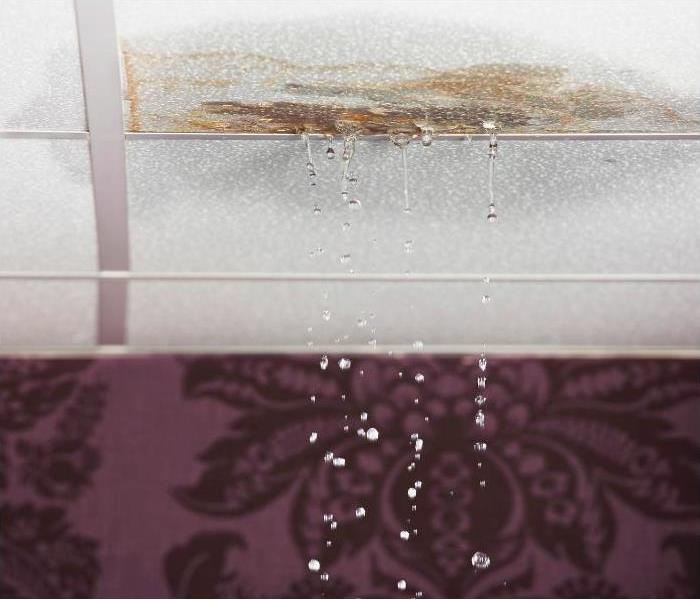 Water Damage in Layton, Ut.
Water Damage in Layton, Ut.
Water damage is an unwelcome guest that can wreak havoc on your home, turning a peaceful haven into a chaotic disaster. Whether it's a burst pipe, a leaky roof, or a malfunctioning appliance, water damage demands swift action to prevent further destruction. In such dire situations, the expertise and prompt response of professionals like SERVPRO of Layton become invaluable. In this blog, we will explore the common causes of water damage, the potential consequences for your home, and how SERVPRO of Layton can work miracles in restoring your dwelling to its pre-damage state.
1. The Causes of Water Damage
Water damage can stem from various sources, each presenting its unique challenges. Leaking pipes are among the most common culprits. Over time, pipes can corrode, weaken, or develop small cracks, leading to slow leaks that often go unnoticed until significant damage has occurred. Additionally, extreme weather conditions, such as heavy rain or snowmelt, can expose vulnerabilities in your home's structure, allowing water to seep through roofs and foundations.
Appliances are another frequent source of water damage. Malfunctioning dishwashers, washing machines, or refrigerators can release water into your home, causing damage to floors, walls, and personal belongings. Moreover, blocked or overflowing gutters and downspouts can lead to water pooling around your home's foundation, resulting in basement flooding and structural damage.
2. The Consequences of Water Damage
The aftermath of water damage can be devastating, affecting both the structure of your home and your personal belongings. If left untreated, water damage can lead to mold growth, compromising the air quality and posing health risks to inhabitants. Wood and drywall can warp, paint can peel, and structural integrity can be compromised, leading to costly repairs. Beyond the physical damage, the emotional toll of seeing your cherished possessions ruined can be overwhelming.
Swift Action: The Key to Mitigating Water Damage
When faced with water damage, time is of the essence. Taking prompt action can significantly reduce the extent of the damage and the associated costs. Here are some immediate steps you can take:
Turn off the Water: If the water damage is caused by a burst pipe or malfunctioning appliance, locate and shut off the main water supply to prevent further flooding.
Document the Damage: Take photos or videos of the affected areas to document the extent of the damage. This documentation can be crucial when filing insurance claims.
Remove Standing Water: Use mops, towels, or a wet/dry vacuum to remove as much standing water as possible.
Ventilate the Area: Open windows and doors to facilitate air circulation and promote drying.
Contact Professionals: Reach out to water damage restoration experts like SERVPRO of Layton for immediate assistance.
SERVPRO of Layton: Your Trusted Restoration Partner
When water damage strikes, SERVPRO of Layton is your ally in restoring tranquility to your home. With a team of highly trained professionals and state-of-the-art equipment, SERVPRO specializes in mitigating water damage and restoring properties to their preloss condition.
Rapid Response: SERVPRO of Layton understands the urgency of water damage situations. Their 24/7 emergency services ensure that a team is ready to respond promptly to your call, minimizing further damage.
Assessment and Planning: Upon arrival, SERVPRO experts conduct a thorough assessment of the damage. This includes identifying the source of the water, evaluating affected areas, and formulating a comprehensive restoration plan tailored to your specific needs.
Water Extraction: Utilizing advanced extraction equipment, SERVPRO swiftly removes standing water from your home. This step is crucial in preventing secondary damage and mold growth.
Drying and Dehumidification: SERVPRO employs industrial-strength air movers and dehumidifiers to thoroughly dry affected areas. This helps prevent long-term damage and inhibits the growth of mold and mildew.
Cleaning and Sanitizing: Once the drying process is complete, SERVPRO's skilled technicians clean and sanitize the affected areas. This includes the removal of contaminants and odors, ensuring a safe and healthy environment.
Restoration and Reconstruction: SERVPRO of Layton doesn't just stop at water removal and drying; they offer comprehensive restoration services. This may include repairing or replacing damaged drywall, flooring, and other structural elements to return your home to its pre-damage state.
Dealing with water damage is a stressful experience, but with the right professionals by your side, the restoration process can be swift and effective. SERVPRO of Layton stands out as a reliable partner, offering a seamless journey from the initial assessment to the final restoration, making your home feel "Like it never even happened." Don't let water damage disrupt your peace of mind—trust SERVPRO of Layton to restore your home and bring back the tranquility you deserve.
Why Are My Home’s Water Pipes Making Noises?
8/31/2023 (Permalink)
 If you hear strange noises from pipes in your Kaysville, UT home, can exist issues that must be fixed.
If you hear strange noises from pipes in your Kaysville, UT home, can exist issues that must be fixed.
Are your Kaysville, UT, home's pipes making strange noises like loud knocking and banging? There's obviously some type of problem with the plumbing, whether a pipe break or something else. Now it's time to determine the exact issue and what to do about it.
How Do I Stop the Racket?
- If Running Hot Water Causes Knocking
Do you ever turn on the hot water tap and hear knocking? Does it continue several minutes after you shut off the tap? If so, the hot water supply lines could be poorly constructed. Hot water makes chlorinated polyvinyl chloride piping expand, so if it doesn't have enough free space, it could be knocking against other objects as it expands. Find the pipes that are causing the noise and give them more room between them and other things. This work could be invasive, requiring cutting into walls and relocating piping, so you will probably need a professional plumber.
- If Running Cold Water Causes Banging
If you hear pipes knocking while running cold water or as soon as you turn on a faucet, you probably have high water pressure. High water pressure can cause the water to flow through the pipes too rapidly. This fast flow makes the lines shake, and they can rattle against anything close like walls or other pipes, causing knocking and banging. You can get a water pressure test gauge to test your home's water pressure, which should be 40-80 PSI. A plumber will need to inspect the home's pressure-reducing valve if the pressure is above 80 PSI. A plumber will determine if they can simply adjust it or if they must replace it. Extremely high water pressure could lead to a pipe break, so someone should investigate as soon as possible. A water damage restoration company can help if you discover a leaky pipe during this process.
- If Shutting Off Water Causes Knocking
If you're hearing knocking after you shut your water supply off, whether cold or hot water, it could be what's called a water hammer. A water hammer happens when a water valve is turned off, which causes the water running through the pipes to crash into the valve. This crash causes the pipes to shake, which causes the knocking. Water hammer is a phenomenon that can happen in various scenarios, including when you turn off water taps, flush a toilet, or when the clothes washer is finished filling. If your home was built after the 1960s, water hammer arrestors were probably installed, but if you're experiencing water hammer, your home may not have them. Homes built pre-1960s have air chambers; water hammer arrestors weren't invented yet. If your home has air chambers, the best option for reducing water hammers is by draining all of the water from your home's plumbing and then turning the water main on again to refill it.
Strange noises like banging and knocking coming from your water pipes can not only be annoying, but they can also be a sign of a more significant issue. Avoid the possibility of having to fix a broken pipe after a pipe burst or pipe break by getting the problem solved as soon as possible.
Steps To Take When Your Toilet Leaks
9/13/2022 (Permalink)
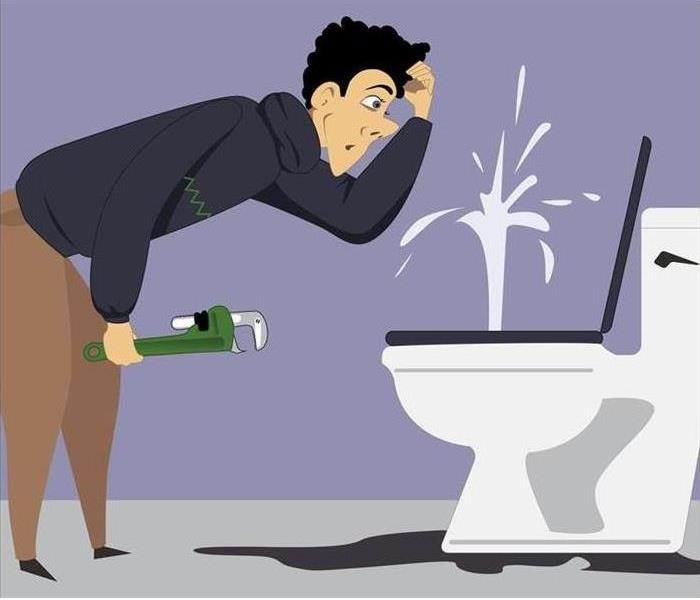 A leaking toilet is usually a simple problem to solve.
A leaking toilet is usually a simple problem to solve.
There are several signs you have a leaking toilet. It may take longer to fill up or you may see water on the floor after flushing. There are three basic things you need to do to fix the problem.
3 Steps You Need To Follow To Fix A Toilet Leak
- Locate the Source
The first step is figuring out where the issue lies. There are several places where leaks can originate:
- Inside the pipes
- Inside the tank
- From the supply line
- Under the base
A good test to help you discover the source of the leak is simply to flush the toilet. If water rises swiftly in the bowl and it threatens to overflow, you probably have a clogged pipe. If the water won't stop running, you may have a faulty gasket inside the tank. Water on the floor can either be from a leaky supply line or a broken seal in the base. Finding the source informs the steps you must take to get rid of the leak.
- Fix the Problem
Once you know the cause of the leaking toilet, you can probably find sufficient tools at your local hardware store to take care of the problem. It may be as simple as tightening the bolts at the base of the toilet. If you don't have any experience fixing plumbing issues or you cannot locate the source of the leak, however, it's best to call a plumber in Layton, UT, to fix it.
- Repair the Damage
Any type of bathroom leak can cause hidden water damage. This is especially true if the problem goes undetected for a long time or if there are delays in getting it fixed. After the leak is repaired, water restoration experts can assess the damage it caused to your walls, floors or even the ceiling of the floor below the bathroom. Fixing the damage quickly is the key to avoiding additional problems.
A leaking toilet is usually a simple problem to solve. To keep the problem from getting out of hand, fix the toilet and any damage it causes in a timely manner.
4 Steps To Protect Your Home From Water Damage
8/10/2022 (Permalink)
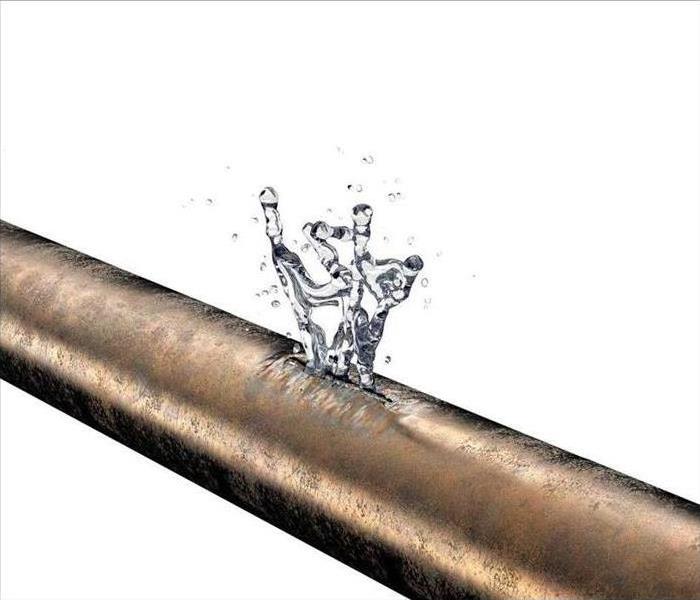 Bursting pipes can cause severe water damage.
Bursting pipes can cause severe water damage.
Bursting pipes have many causes, and this increases the difficulty of addressing the problem appropriately. It's one thing to fix broken pipe systems; it's another to make sure you don't have further water damage and, possibly, mold. If you want to avoid serious damage, you need to know exactly which steps you need to take as soon as a pipe bursts.
4 Steps You Need To Take For a Bursting Pipe
- Shut Off the Water
You'll have to address a few questions at this point:
- Can you identify the point of the burst?
- Can you access the burst?
- Is there a quick way to shut water off at the point of trouble?
It's important that you stop water from gushing into your home as quickly as possible. Your best course of action may be shutting everything off at the water main. This may be located in the basement or on the outside of your home.
- Open Windows and Doors To Increase Ventilation
You need to begin the drying process as quickly as possible. This will make it easier for water damage cleanup and restoration professionals to save your home from more damage. It will also keep your costs and frustration down.
- Remove Water Quickly
It doesn’t take long for bursting pipes to send inches of water into the rooms of your home. Use towels, mops, wet/dry vacuums, and anything else that will pick up water. The faster you remove water from the area, the better you can avoid hidden pockets of moisture that cause trouble later on. Make sure you check the surrounding rooms for increased humidity or evidence of seeping water.
- Turn on Fans and Dehumidifiers
Borrow fans and dehumidifiers from your Layton, UT, neighbors if you have to or get some from an equipment rental agency. Use fans in the rooms with open windows and use dehumidifiers in enclosed spaces. Remember to empty the water out of the dehumidifiers whenever the tanks fill up.
These important steps can protect you from expensive damage, and contacting professionals is the best way to avoid secondary damage, such as mold in areas that you can't see. When you have bursting pipes, take these four steps and then call your insurance agent and the water cleanup pros.
Prevent Water Damage
7/12/2022 (Permalink)
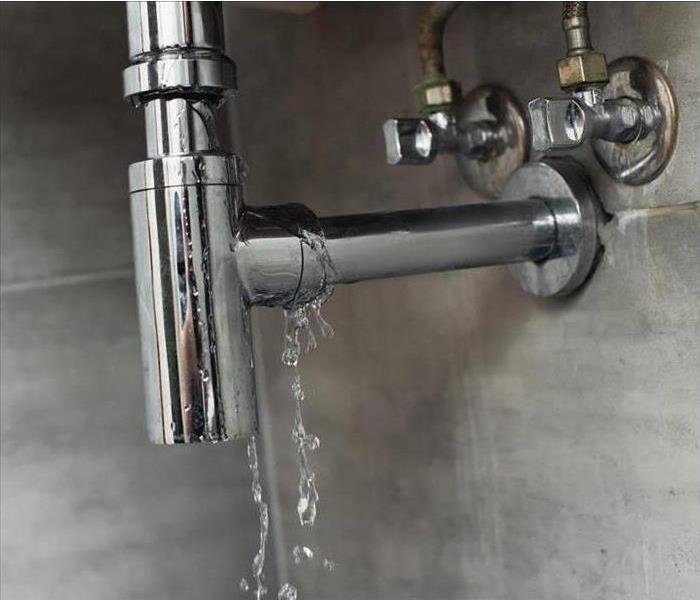 Water damage can be caused by a leaking pipe.
Water damage can be caused by a leaking pipe.
A small puddle of water in the home can turn into a big problem in a short amount of time. Your best bet is preventing any event that could cause the puddle to form. Here are four tips for preventing water damage to your home in Layton, UT.
4 Ways to Prevent Water Damage
- Maintain Appliances
A common cause of water damage in homes is a leaking appliance. There are several items in your home that can leak if they're broken:
- Washing machine
- Refrigerator
- Freezer
- Water heater
Each of these appliances should be maintained regularly to ensure that they are in good working condition. Water cleanup experts recommend frequent checks to save your home from water damage.
- Check Pipes
A small pipe leak can wreak a lot of havoc, particularly if it goes undetected for a long time. Make pipe checks a regular part of your maintenance schedule. Watch your water bill for unexplained spikes, and inspect the pipes under sinks frequently. Pipe cleanup under one cabinet is better than having to replace walls and flooring because you were not aware of an issue.
- Update Exterior Drainage
Water outside the home can easily become water in the home if you aren't careful. Keep gutters and downspouts clear of debris so that precipitation can drain properly rather than pooling on the roof. Your exterior drainage plan should direct runoff away from your home rather than toward your foundation.
- Install a Sump Pump
Despite your best efforts to prevent it, a flood from a broken pipe may occur. You can limit the amount of water damage by installing a sump pump. When this device detects flooding, it kicks into gear to pump the water out so that it doesn't seep into your floors and walls.
Damage from water in the home can take a lot of time and money to repair. Protective measures and preventative maintenance can lower your risk.
5 Essential Tips for Repairing Residential Water Damage
6/17/2022 (Permalink)
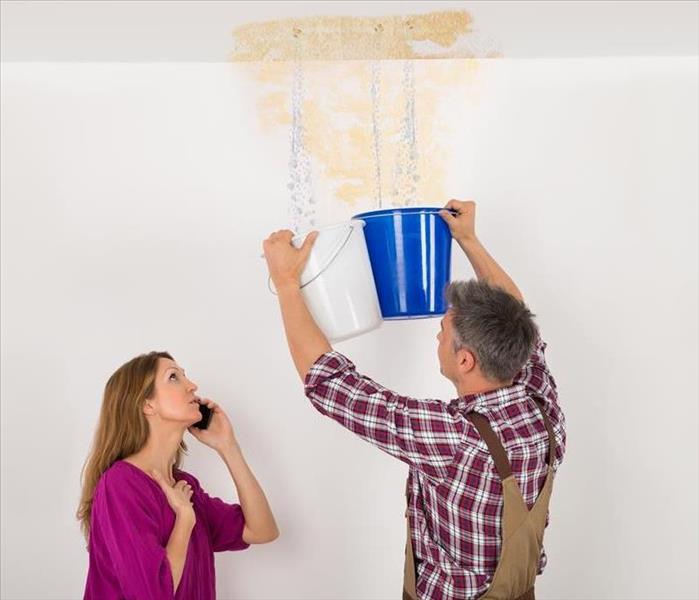 Our Specialists know a lot about Repairing Residential Water Damage. Call us.
Our Specialists know a lot about Repairing Residential Water Damage. Call us.
Plumbing lines break when they become clogged or deteriorated. Often, these conditions occur behind walls or under the ground, leaving homeowners in Layton, UT, to face sudden flooding and severe water damage. What should you do? Take action immediately.
What To Do When Water Damage Impacts Your Home
For one second, everything works fine. A moment later, you're staring at puddles of moisture, filling up the hallways and saturating precious belongings. When this event happens, it's imperative to react immediately. Don't grab the towels and mop. Instead, follow these five essential tips to minimize harm and get your home cleaned properly.
1. Find and Fix the Broken Pipes
When you see damp spots on walls or water spraying from a fixture, focus on the underlying cause. Stop the water from entering the home. Turn off the main water supply to the area, avoiding additional floods and breaches.
Work with professionals to identify pipe vulnerabilities and repair the problem. Scope the lines with visual equipment, closely examining the metal. Tend to any trouble.
2. Contact Specialists for a Property Assessment
Water damage is seemingly deceptive. Moisture seeps into porous items, dampening them and bringing with them spores and microbes. The fluid spreads far beyond the visible wet lines, often impacting objects further away. Therefore, owners should contact professional water remediation crews in Layton, UT, to look over the premises. Using moisture readers and other innovative technology, they determine how much of the home has received water impact.
In addition, they take samples from the walls, floors and valuables, testing for possible contamination. The data provides accurate information to devise a personalized response plan for the home.
3. Reduce Moisture Levels
Fungus thrives in dark, damp locations. Floods from pipes saturate materials and often trigger their reproduction. The Environmental Protection Agency, EPA, notes that these growths move quickly, rapidly increasing within 24-48 hours. Furthermore, the room's enhanced humidity continues to promote proliferation.
Therefore, owners must eliminate the wetness. The EPA suggests decreasing numbers to 30-60%. Run industrial-strength dehumidifiers throughout the impacted zones. These units pull the fluid from the walls and floors. Test regularly with moisture readers to ensure you achieve lower moisture numbers.
Drywall and carpeting hold the spores and moisture and are hard to clean thoroughly. Tear them out to lower the contamination. Remove heavily soaked items. Scrutinize all possessions. Non-porous objects can be wiped down and removed during cleaning. Assess porous things to determine if they can stay or be thrown away.
4. Sanitize and Treat the Room
When water cleanup is over, specialists turn attention to sanitizing and deodorizing treatments. Wash all non-porous items and treat them with an antimicrobial product. Clean air vents and allow experts to use their certified training and technology to reduce unpleasant odors.
5. Restore the Location's Structure and Belongings
With the underlying conditions handled, the repairs begin. Torn-out areas get rebuilt. Damaged items get replaced, and the crew starts to paint and restore the premises to better than new conditions.
Don't let water damage harm your home. Mitigate harm and restore quickly, getting your place back to normal. It's critical to take prompt action, drying the premises quickly and fixing the moisture source.
Protect Your Home From Water Damage While You're Away
4/9/2022 (Permalink)
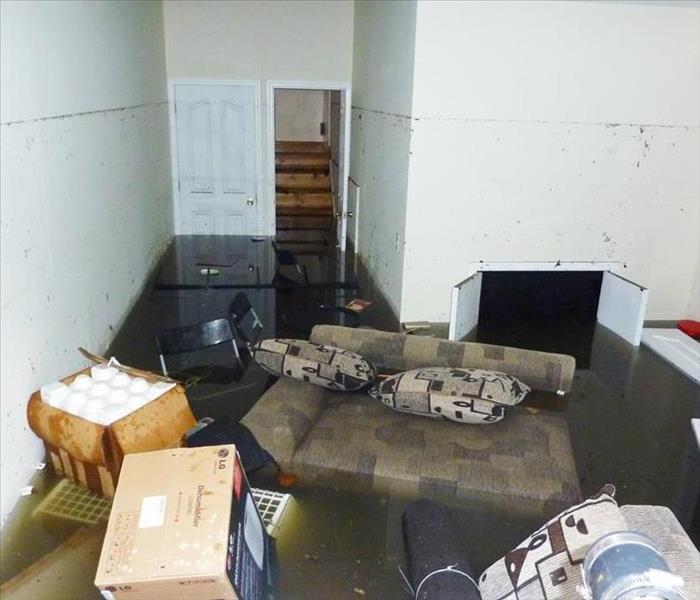 Protect Your Home From Water Damage by Following Our Tips.
Protect Your Home From Water Damage by Following Our Tips.
When you're preparing to head out of town, protecting your home from water damage may not be on your to-do list. Sadly, water damage is the second most common type of home insurance claim. It only takes minutes for gallons of water to flood into your property. If you don't catch the need for water pipe repair until several days or weeks have passed, the damage will be extensive. The good news is that you can take steps to keep your home safe.
Quick and Easy Prevention
Many of the tips for preventing a broken pipe and other sources of flooding require minimal time and effort:
Leave the heating and cooling system turned on as usual. The consistent air circulation prevents trouble, such as increased humidity from the heat and frozen pipes in the winter.
Make sure the gutters and downspouts around your home are clean, so rainwater is diverted appropriately away from the home.
Shut off the water main and flush the pipes, faucets, and toilet until no more water is running.
If your trip away from home is scheduled during the winter, add insulation around any exposed pipes and a sleeve around the water heater. Check your local hardware store for marine antifreeze to put into the remaining water in the toilet and leave the doors to cupboards and cabinets open to allow for air circulation.
Thorough Inspections
One of the best ways to avoid water pipe repair, even when you aren't going out of town, is scheduling regular inspections. You can do this yourself, or you can hire a professional who can recognize trouble while problems are still small. Physically inspect every source and container of water:
- Water heater
- Appliances and hoses
- Toilets
- Pipes under the sinks
It's also a good idea to make sure the seals around the windows are watertight and run a quick test of the sump pump, so you can be confident it's in good working condition.
If your home does get flooded while you're gone, a working sump pump could reduce some of the damage. On the other hand, a sump pump that isn't working properly could cause flooding.
Trustworthy Neighbors
Even a slow drip of water from a broken pipe can cause a lot of harm to your Layton, UT, home, especially if the leak springs right after you leave. However, if you have neighbors who are willing to walk through your house from time to time, they can catch spot trouble and take action quickly. Let them know which areas could be problematic and provide them with contact information, so they can quickly organize cleanup and repairs if flooding does occur.
If you do come home from a trip and find flooding, contact a water damage cleanup professional right away. Next, contact your insurance company, so an adjuster can get started on your insurance claim. Your insurance company can also tell you which steps you can take next.
Even with preventative steps, your Layton, UT, home could still be exposed to water damage. When water pipe repair is necessary, a professional response is thorough and effective.
What Causes a Basement Flood?
11/15/2021 (Permalink)
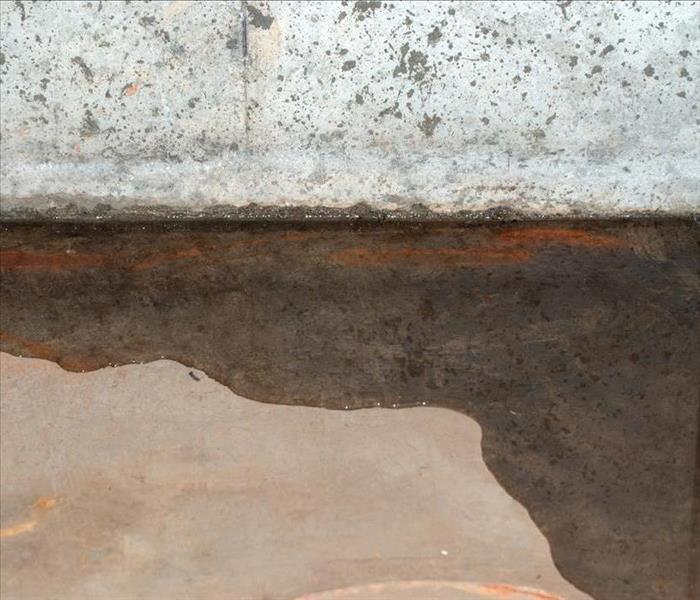 Detecting the cause of your basement flood is the most effective way to protect your Kaysville, UT property.
Detecting the cause of your basement flood is the most effective way to protect your Kaysville, UT property.
One of the worst nightmares for a homeowner is a basement flood, resulting in inquiries about flood prevention to water mitigation specialists in Kaysville, UT. Unfortunately, before you can look into preventatives, you need to understand the most common causes of flooding in your basement, including:
- Location
- Drainage installation
- Sealant processes
- Eaves and gutter maintenance
This is not an exhaustive list, but it is good enough for a start. Only after understanding each of these issues can you begin to understand the preventative steps you need to take to protect your property.
5 Primary Reasons a Basement Flood
When considering water damage and flooded basements, it is easy to wonder why your house is prone to such issues. A house that routinely floods likely has one or more characteristics in common with similar homes. Primarily, there are five common causes of routine basement flooding.
1. Location
A basement that floods often is typically the result of an unsuitable location. Most construction specialists recommend building properties on sloped sites to prevent flooding, allowing water to flow away from the home’s foundation. Unfortunately, if your home is built on a low-lying site, it will likely be prone to floods.
To avoid perpetual flooding, you will need to install an effective drainage system. Always hire a licensed plumber for such installations.
2. Improper Drainage System Installation
Drainage systems, like sewers and downspouts, require proper installation to be most effective. When homeowners choose DIY methods, equipment is typically incorrectly or inadequately installed, often resulting in the problems such installations are meant to prevent. Therefore, always work with a professional.
3. Poor Wall and Flooring Sealant
Every home with a basement goes through a process to seal it against groundwater and rains. Unfortunately, not all sealing methods are as effective as others, resulting in routine flooding. If you find that your basement is often flooded after significant rains, consider having the sealing inspected. A professional plumber can help you identify any issues and can provide potential solutions.
4. Clogged Eaves
One thing many homeowners do not consider is that clogged eaves can lead to flooding in the basement. When the eaves are blocked, the rainwater can not make its way to downspouts, and it ends up pouring over the side of the troughs, running down the sides of the house and along the foundation. If enough water collects near the foundation, you can experience flooding.
5. Blocked Gutters
As with eaves, blocked gutters can also lead to flooding in your basement. If blocked downspouts do not allow water to flow freely, the water backs up, seeping out of connection joints and pouring onto the ground near the foundation. When enough water collects, or after enough time passes, the water will make its way inside.
No homeowner wants to deal with a basement flood. It is a costly problem, and it can result in the loss of property and items with sentimental value. While the above causes are not an extensive list of flooding issues, they are the most common and provide homeowners with insight into potential solutions.
Avoiding the Potential Small Business Claim in Your Pipes
10/5/2021 (Permalink)
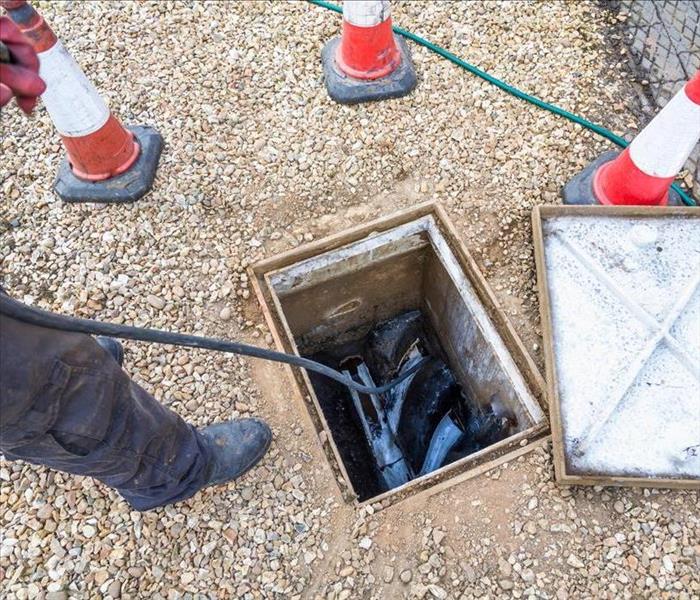 Routine cleaning will avoid plumbing disasters in your Layton, UT business.
Routine cleaning will avoid plumbing disasters in your Layton, UT business.
Running a business is expensive, which is why most strategies involve cost-cutting and efficiency. One of the most significant expenses for commercial buildings is water damage. Unfortunately, it is relatively common and can lead to lengthy business claim processes. To reduce your overall risks, talk to a water mitigation professional in Layton, UT, about plumbing maintenance.
4 Maintenance Musts To Avoid a Small Business Claim
Whether you fear a pipe break or sewage backup, knowing proper maintenance protocols is essential to limiting your risks of plumbing disasters. People are often amazed at how much routine cleaning and inspections can reduce overall disaster risks, but staying on top of issues when they are minor means avoiding the expense of significant problems later. There are at least four steps you can take to limit the potential issues, especially severe ones.
1. Fix Recurring Problems
Commercial facilities are always busy, meaning that minor problems and repairs can go unnoticed or be viewed as nuisance issues that do not require immediate attention. However, recurring problems often become significant issues if left to fester.
While a bathroom sink might become clogged frequently and is seemingly restored with a plunger or auger, there might be more going on deeper in the drain if it is a persistent problem. Anytime a plumbing issue comes up again and again, it is crucial to address and fix the underlying problem.
2. Block Debris From Drains
In commercial kitchens, it is common for food waste and other materials to find a way into the drains — the same can be said for floor drains. If you want to reduce your risks of clogs and future plumbing problems, find a way to block large debris from entering the system.
Many drain covers and nets can help eliminate the risk of things entering the system unintentionally. However, it is also beneficial to put up caution and warning signs to deter complacency. You might also need to put up signs in bathrooms or toilet stalls addressing what is not appropriate or flushable.
3. Adhere To a Maintenance Schedule
All commercial drains require upkeep. Any drain left alone for years, or longer will develop clogs and problems. Your maintenance staff should focus on cleaning drains around the property at least once per year.
When cleaning drains, it is important to avoid harsh chemicals. Chemical cleaners can do more harm than good. It is better to use an auger or drain snake to ensure no obstructions in the line. For more thorough cleanings, you can contact a professional.
4. Schedule Professional Cleanings
Annual inspections of your plumbing systems are routine, but bi-annual scheduling inspections are even better. A professional review in the fall and early spring is necessary to ensure no climate-related damage to the system. In most instances, the professional you hire will use a scope to inspect all plumbing lines, informing you of any issues they come across.
A business claim is often necessary to restoring damage after a plumbing disaster. However, it is better to focus on prevention and maintenance to reduce the risks of a large-scale disaster.
Understanding Mold as Secondary Damage
8/10/2021 (Permalink)
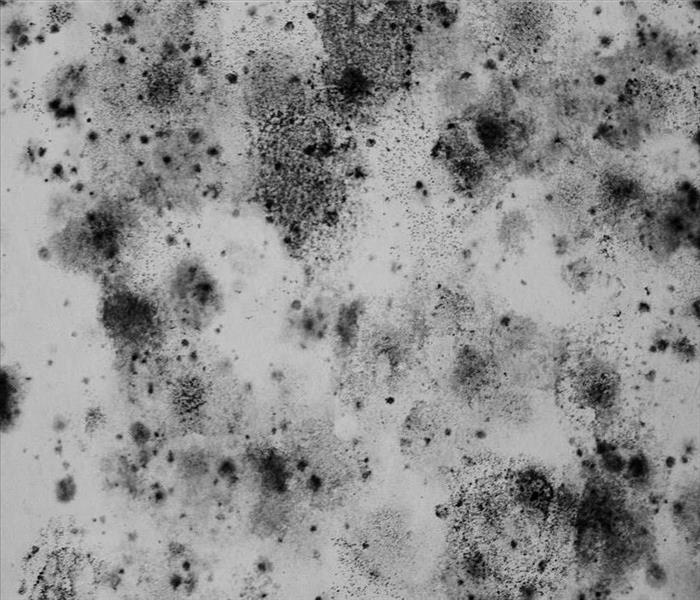 Black mold comes after water damage.
Black mold comes after water damage.
Despite the assumption that mold is a primary concern, black mold is secondary damage. Granted, mold is alarming, and it needs to be addressed quickly; however, without addressing the real underlying issues, a business will continue to see a resurgence in mold growth.
When it comes to mold, the primary concern is water damage, which does not need to be significant. Simple issues can lead to mold growth in a commercial facility. Therefore, it is best to contact a mitigation and restoration company in Layton, UT, to assess the location. Typically, four sources of water damage can contribute to a mold problem:
- Poor ventilation
- Minor or persistent leaks
- External flooding
- Failed repairs
Need for Adequate Ventilation
It is typical for commercial buildings, especially kitchens and warehouses, to experience levels of high humidity. If a building is not adequately ventilated, the humidity contributes to excessive moisture content, resulting in mold development.
Mold is not a complex organism. It thrives in balmy, dark, and damp locations. A building that maintains temperatures between 77° F and 86° F is prime for an infestation, especially with humidity readings above normal — less than 50%. The ideal temperature does not have to be present throughout the entire building, only where the mold is likely to grow. Therefore, boiler rooms, kitchens, laundry facilities, etc., are prime real estate for spores to collect.
The best way to ensure your facility remains mold-free is to ensure proper ventilation. Additionally, install dehumidifiers in areas prone to increased humidity.
Importance of Preventative Maintenance for Avoiding Minor or Persistent Leaks
Black mold is like any other living thing, and it requires water to survive. More often than not, the water mold thrives off of is from minor and persistent leaks. Business owners might not even realize there is a leak because of how small it is. Unfortunately, those imperceptible leaks are enough to result in significant mold colonies.
The most efficient way to minimize your risks of leaks is to perform routine inspections. Additionally, hire a professional to inspect the plumbing throughout the facility at least once per year, allowing them to perform regular maintenance or repairs.
Avoidance of External Flooding and Internal Problems
While most business owners are concerned with leaks and internal flooding, external flooding is equally problematic in terms of mold. If the landscaping results in pooling against the facility or an older roof results in pooling on the roof, your facility is at risk for leaks and mold.
Mold can start from the exterior and move inward, often following the same path as water. If your facility experiences routine external flooding or pooling, make arrangements to correct the issues.
The Necessity of Thorough Repairs
If you are experiencing repetitive mold problems recurring in the same area or close, the problem is likely due to a failed repair. Sometimes, a company does not perform a thorough inspection of the facility to ensure all water and moisture problems are addressed. If you do not correct all issues, a resurgence is likely.
Black mold is secondary damage. To repair your facility, focus on finding the primary issue and resolving that first.
Faster to your Davis County Water Damage Event
8/3/2021 (Permalink)
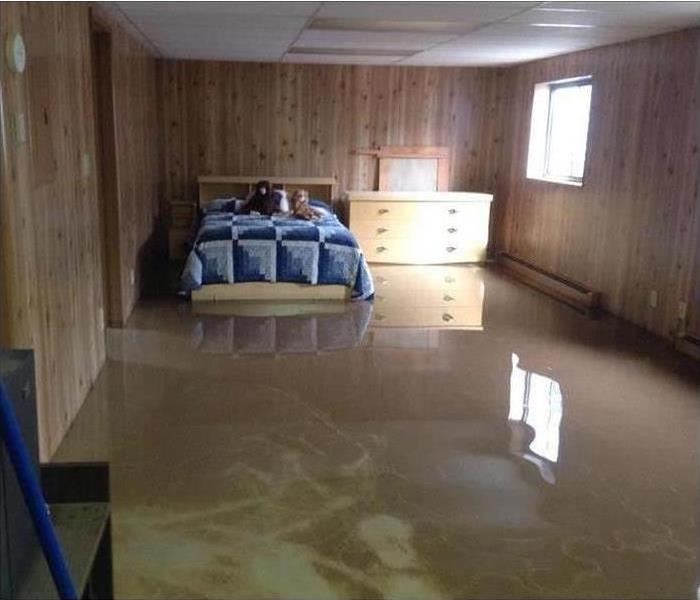 This Davis County home was flooded due to secondary water being turned on.
This Davis County home was flooded due to secondary water being turned on.
Flooding and water emergencies don’t wait for regular business hours and neither do we. SERVPRO of Layton/Kaysville provides emergency cleaning and restoration services 24 hours a day, 7 days a week—including all holidays.
Faster To Any Size Disaster
Flooding and water damage are very invasive. Water quickly spreads throughout your home and gets absorbed into floors, walls, furniture, and more. SERVPRO of Layton/Kaysville arrives quickly and starts the water extraction process almost immediately. This immediate response helps to minimize the damage and the cleaning and restoration costs.
Need Emergency Service? Call Us 24/7 – 801-298-4272
Water Damage Timeline
Within Minutes
- Water quickly spreads throughout your property, saturating everything in its path.
- Water is absorbed into walls, floors, upholstery, and belongings.
- Furniture finishes may bleed, causing permanent staining on carpets.
- Photographs, books, and other paper goods start to swell and warp.
Hours 1 - 24:
- Drywall begins to swell and break down.
- Metal surfaces begin to tarnish.
- Furniture begins to swell and crack.
- Dyes and inks from cloth and paper goods spread and stain.
- A musty odor appears.
48 Hours to 1 Week:
- Mold and mildew may grow and spread.
- Doors, windows, and studs swell and warp.
- Metal begins to rust and corrode.
- Furniture warps and shows signs of mold.
- Paint begins to blister.
- Wood flooring swells and warps.
- Serious biohazard contamination is possible.
More Than 1 Week:
- Restoration time and cost increase dramatically; replacing contaminated materials and structural rebuilding may be extensive.
- Structural safety, mold growth, and biohazard contaminants pose serious risks to occupants.
About SERVPRO of Layton/Kaysville
SERVPRO of Layton/Kaysville specializes in the cleanup and restoration of residential and commercial property after a fire, smoke, or water damage event. Our staff is highly trained in property damage restoration. From initial and ongoing training at SERVPRO’s corporate training facility to regular IICRC-industry certification, rest assured our staff is equipped with the knowledge to restore your property.
What a Restoration Company Will Do After Pretesting
6/28/2021 (Permalink)
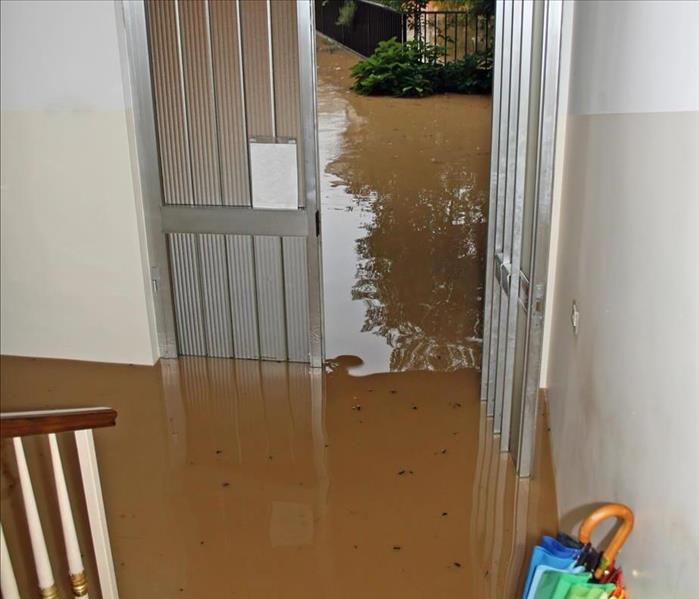 Flooding home in Kaysville, UT.
Flooding home in Kaysville, UT.
Not many people realize that pretesting can keep your insurance claims down in the long run. In order to take advantage of this, you need to understand what it is, what it entails, and how it can help you.
Pretesting
This is the process of making a complete assessment of your property and the damage. Sometimes your water restoration company in Kaysville, Utah, will be able to tell you what needs to be done and what can be restored. Certain will have to be thrown away while others can be cleaned.
You may need to get rid of:
- Exposed food
- Paper products
- Flooded electronics
Many other items such as furniture, carpet, and clothing can be salvaged. A good company will list these things and when they file the insurance claim.
Identify and Correct
The first thing a company will do is identify the damage and stop it. This is an important step because nothing else can proceed until the problem is stopped. In the case of a severe leak, they will stop the leak and fix the immediate damage.
Assessment
One of the primary things that a good company does is a pretesting assessment. Once the cause of the damage is taken care of, they will perform a proper assessment. They will write down any damage, take pictures and develop estimates for replacing or repairing items.
Beginning Work
A company that pretests have the added advantage of knowing exactly what needs to be done. If they work with your insurance agent, they may also know what your insurance covers and what will be out-of-pocket. They file with your insurance company and begin any work that needs to be done.
With pretesting, a restoration company can work with your insurance, file your claim, and provide your insurance company with what they need to help you get back into your home faster.
Learning About Category 3 Water Damage
4/15/2021 (Permalink)
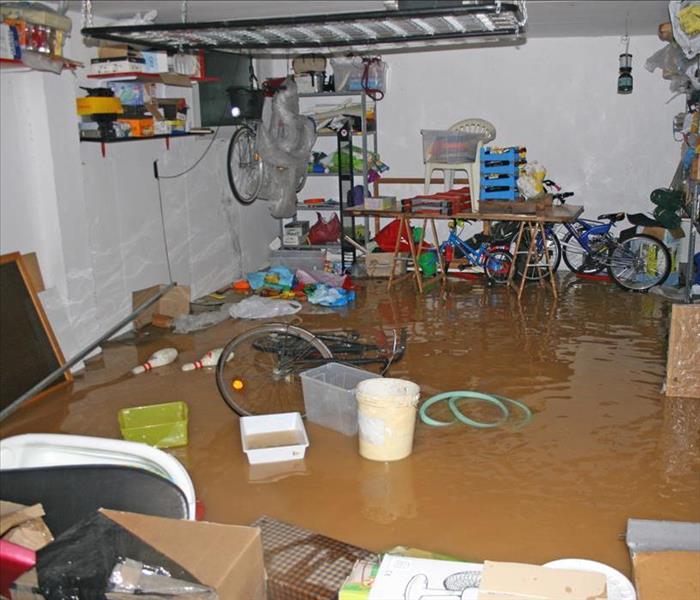 Black water should be handled by professionals.
Black water should be handled by professionals.
Category 3 or black water is among the worst contaminated water. Bacteria and other harmful compounds, including chemicals, are found within the liquid and if ingested can prove dangerous to your health. While calling a mitigation service in Layton, UT, is a no-brainer, there are a few other things you should know.
3 Facts About Category 3 Water Damage
1. Common Sources of Black Water
Contaminated water does not just appear out of nowhere. There are several potential sources, like sewage backups or natural floods. A toilet or floor drain backup will often result in a sewage cleanup, because the water comes from a waste source. While a natural flood might not begin as category 3 water, as water levels rise and mix with other sources it evolves.
2. Necessary Precautions
You should never handle contaminated water. While most people will do their best to avoid ingesting the substance, the water can cause harm by contacting the skin. If you must work or wade through contaminated water, wear protective clothing, gloves, mask, and goggles. If you can tape off areas around your wrist, ankles, and waistline where water might touch. The safest option for flood removal and water treatment is to hire a professional mitigation service.
3. Water Removal and Home Restoration
Regardless of the water level, when dealing with significantly contaminated water, contact a home restoration specialist to deal with water removal and disinfection. These professionals have appropriate certifications and knowledge for staying safe during such tasks. While saving money is vital to many people, when your health or home are at risk, it should not be the priority.
Black water the highest level of water contamination, and it should not be handled by an inexperienced homeowner. Water mitigation services are trained in federal and local regulations to handle such materials. Let the professionals do their job and you focus on keeping you and your family healthy and happy.
Potential Causes of a Toilet Overflow
3/29/2021 (Permalink)
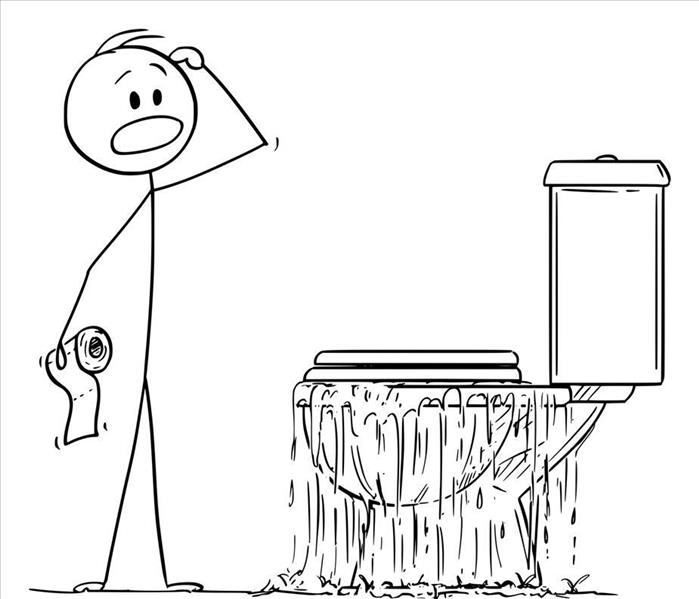 Toilet overflow can cause a lot of damage.
Toilet overflow can cause a lot of damage.
One of the most common causes of water loss for homeowners in Layton, UT, is damage from a toilet overflow. An overflowing toilet may seem like a small problem at first, but it can cause a lot of damage that you will need sewage cleaning experts to mitigate. The best solution, of course, is to prevent a flood-inducing clog in the first place, but if the problem keeps returning, you may have a bigger issue to handle.
Causes of a Toilet Overflow
Toilet Line Clog
The most common cause of toilet overflow is a clogged toilet line. There are many things that can cause a toilet line to back up:
- Hard water deposits
- Excessive toilet paper
- Foreign objects
You can prevent hard water deposits by adding a softener to your line or by being vigilant about cleaning the pipes on a regular basis. Make sure every family member knows what can and cannot be flushed down the toilet to avoid mishaps caused by overfilling.
Pipe Clog
Sewage cleaning may be necessary if your toilet overflows due to an adjacent plumbing issue. For example, if you step out of the shower into a puddle from your toilet that wasn't there before, you probably have a clogged pipe somewhere in the sewer system itself. This issue requires not only water damage mitigation but also sewer inspection and repair. A plumber is needed to identify the location of the clog. Depending on how much damage the backup has caused, you may need extensive repair or even replacement of your sewer system to keep the toilet from overflowing again.
Toilet overflow often means that the lines leading from the toilet to the sewer are clogged, but it may also indicate a larger problem. You may need to consult both a plumber and remediation experts to diagnose and fix the cause of the backup and to get efficient, thorough sewage cleaning for the effect it had on your bathroom.
Tips for Preventing Water Damage in Your Absence
1/14/2021 (Permalink)
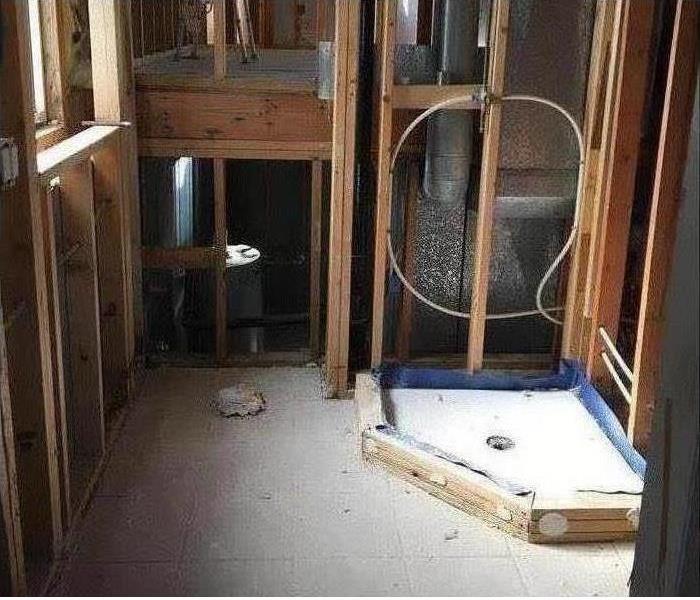 Water Damage in a Layton, UT home.
Water Damage in a Layton, UT home.
Everyone deserves to get away once in a while, but coming back to your home in Layton, UT, after a relaxing trip or holiday to find water damage can ruin the end of a good time. To avoid the need for water pipe repair when you return from your vacation, here are a few tips to follow before you leave.
3 Tips to Prevent Water Damage
1. Inspect
You should be checking your home for potential problems that lead to water damage on a regular basis anyway, but it is especially important before you plan to be away for a while. Make sure none of the hoses or supply lines are leaking. Check for broken shingles on the roof and clogged rain gutters. Test the sump pump in your basement by pouring water in and seeing if it kicks into gear.
2. Maintain
If you find any problems during your inspection, you will want to fix them. Water remediation specialists can mitigate any existing water damage and perform water pipe repair so that secondary problems such as mold growth don't develop in your absence. Clean your gutters, and insulate exposed pipes, especially if your trip takes place during the winter months. Set your thermostat so that your home remains warm so that your pipes don't freeze while you're gone.
3. Drain
Ideally, you have a neighbor, friend or family member who can check on your house periodically. If that's not the case, however, you can still protect your home by cutting off water flow altogether. One way to avoid a broken pipe is to drain all the water out of it before you go. You can also turn off the main water valve to the house. If water isn't flowing to your pipes, your home is less likely to be flooded.
No one wants to come back from vacation to discover that water pipe repair and water mitigation is necessary. By taking these precautions, however, you can relax fully during your trip, knowing your home is safe from water damage.





 24/7 Emergency Service
24/7 Emergency Service














